Commercial cleaning goes green
Reimaging commercial cleaning as a low carbon industry.
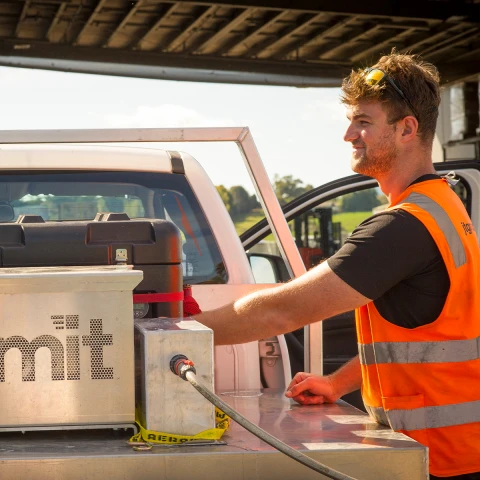
Reimaging commercial cleaning as a low carbon industry.
Running one petrol or diesel commercial water blaster for one hour generates the same emissions as driving 11 passenger vehicles for one hour, a combined distance of around 1,000km.
It’s ironic that an industry based on keeping things clean is so reliant on carbon-intensive fossil fuels to power its machinery. Or at least it was, until Wellingtonian Ray Tomlinson came up with a much smarter way of doing things.
Ray is the owner of JT Group, a cleaning business that’s been in his family since the 1960s. It now operates nationwide, cleaning everything from supermarkets to airport carparks.
It would be more accurate, however, to describe Ray as an innovator rather than a cleaner. Since taking the reins of the business, Ray has worked with his engineers to completely reimagine commercial cleaning as a low carbon industry that runs on clean energy.
“It all started when I was competing in triathlons. I was swimming in Wellington harbour and all I could think of was all that water we’d blasted going straight down the drain. So from then on, the question became: what are we doing for the environment?”

With support from Callaghan Innovation, Ray and his engineering team have developed two machines that not only slash the amount of water needed to clean buildings by 80%, but also completely eliminate the need for fossil fuels by running on electricity.
One is a futuristic robotic washer that automatically scales buildings and brushes them clean, a bit like a souped-up Roomba for the exterior of your house. A prototype is currently being used at Wellington Airport’s carpark building, where it has proven to be faster, more cost-effective and far more climate-friendly than traditional machines.
“That building would normally take three guys with water blasters three days to wash. With this machine, two guys can do it in a day. That’s a massive reduction in water and a massive reduction in carbon emissions.”
Ray and his team are now validating a version of the machine that swaps the heavy power cable for a rechargeable battery pack, an innovation that Ray says will put it streets ahead of any comparable machine on the global market.
“It’s also just an incredible machine to watch. We’ve already had television news run a story about it and there’s no shortage of interest - it really generates its own publicity.”
Developing the technology for the robot washer was also the catalyst for Ray’s second innovation, the world’s first battery operated, rechargeable commercial water blaster. Ray is currently building 15 of these to replace the petrol and diesel-powered machines in his fleet and says enquiries are already coming in from overseas.
“With 15 electric units, we’ll be reducing our carbon emissions by 800 tonnes a year. That’s a great story to tell and it’s one that people are really starting to notice.
“I’ve had enquiries come in from Australia, and that’s before we’ve done any marketing or sales outreach. The potential for both machines is huge, we’re all really excited.”
Ray acknowledges the higher upfront cost of his battery-electric machines, with a purchase price around three times higher than petrol or diesel-powered models. But he says this is offset by radically reduced operating and maintenance costs.
“A commercial cleaner could expect to pay around $1,000 a month in fuel with traditional water blasters. And if you look where fuel costs are heading, this is an overhead that is likely to grow in the future.
“The same cleaner can charge my battery machine for around $4. And that will last all day, so with average use, the machine would pay for itself in around three years. On top of that, you’ve got much lower maintenance costs, so it’s a no-brainer from a financial standpoint.”
Ray says another benefit to going electric is the lack of noise. With cleaning jobs routinely scheduled for the middle of the night or early mornings, this can make life easier both for the operator and for residents close by.
“We’ll be working at 4 or 5 in the morning to clean a supermarket entranceway, and you’ve got neighbours nearby, some that have noise curfews. With petrol or diesel machines you can try your best but it's still noisy. With these machines, there’s nothing.”
Looking ahead, Ray sees commercial battery systems replacing much more than just diesel powered water blasters.
“All the heavy stuff you find on construction sites that still run on diesel, like concrete cutters and compactors. They all have these noise, dirty, archaic motors and there’s no reason our technology can’t transfer to these kinds of machines.
“So the future is looking really good for electric. The potential really is huge.”
Learn how New Zealanders from all walks of life leading the way to a zero-carbon Aotearoa. Each of them has overcome the challenge of transitioning to cleaner energy, proving that as a country we have the ideas, the technology and the ambition to make this happen.
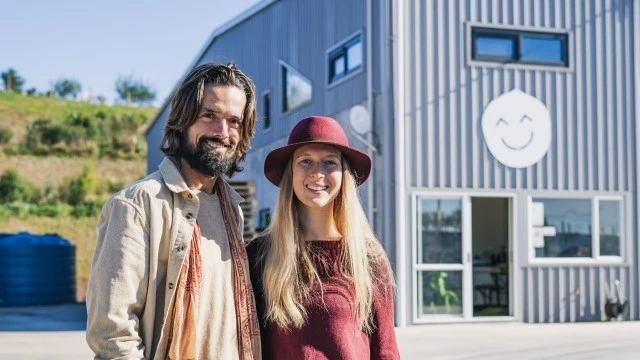
Raglan Food Co leads by example when it comes to looking after their community and the environment.
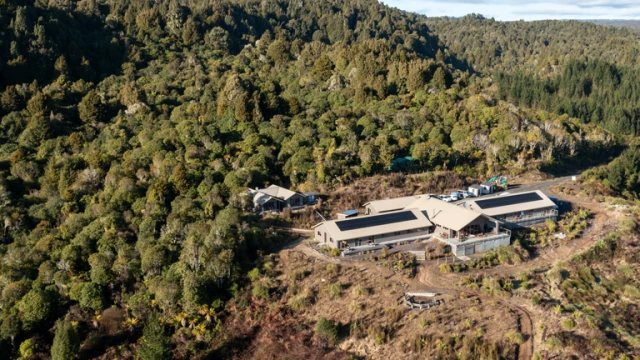
In the Central North Island, a unique lodge is proving it's possible to run an eco friendly tourism business in Aotearoa without burning through fossil fuels.
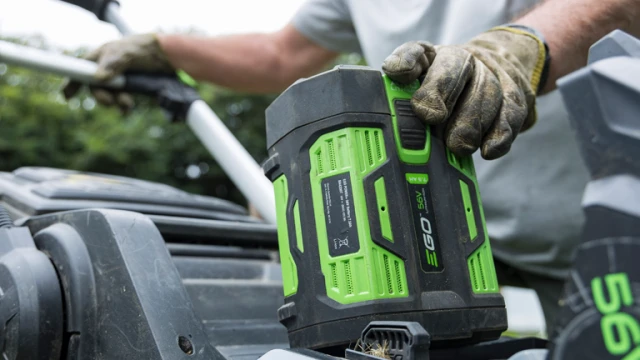
The days of having your peaceful weekends ruined by the sound of lawn mowers and leaf blowers will soon be over.
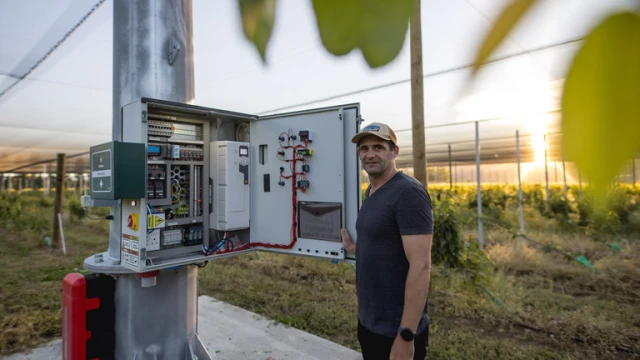
How a small farm near Wānaka changed one couple’s lives - and kickstarted a global movement to grow food completely free of fossil fuels.
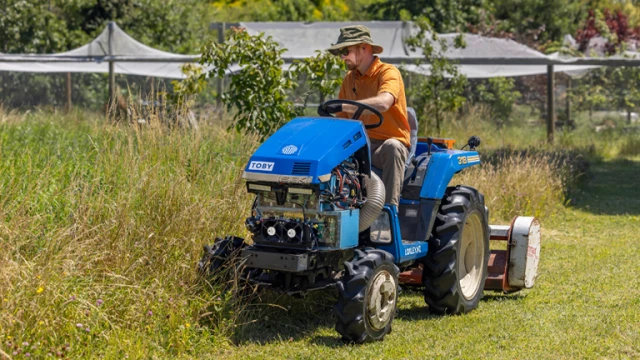
Electrifying a tractor doesn’t just make it cleaner and cheaper to run. It also makes it exponentially more useful, according to Canterbury-based innovator Duncan Aitken.